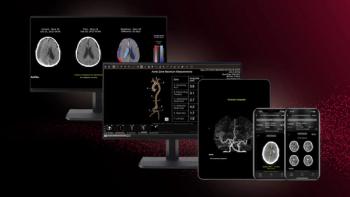
Blunt Chest Trauma in ED Does Not Always Require CT
CT not always necessary for adult patients presenting with blunt trauma to the chest.
Emergency department physicians could safely cut the use of CT scans by one-third among patients older than 14 presenting with blunt trauma to the chest, according to a study published in
Researchers from California, New Jersey, and Massachusetts performed an observational study to assess two decision instruments (DIs) for selective CT in adults with blunt trauma.
"CT scans deliver radiation dosages to the body that elevate cancer risk, especially in the young, and they are expensive, so we want to be sure to use them only when they are likely to provide a diagnostic benefit," study leader Robert Rodriguez, MD, professor of emergency medicine, University of California, San Francisco, said in a release.
The study included 11,477 patients (6,002 patients in the derivation phase and 5,475 patients in the validation phase), aged 14 and older. The injuries were sorted into major or minor as determined by CT scan. Major injuries included:
• Injury to the aorta[[{"type":"media","view_mode":"media_crop","fid":"42973","attributes":{"alt":"Robert Rodriguez, MD","class":"media-image media-image-right","id":"media_crop_1103620479932","media_crop_h":"0","media_crop_image_style":"-1","media_crop_instance":"4677","media_crop_rotate":"0","media_crop_scale_h":"0","media_crop_scale_w":"0","media_crop_w":"0","media_crop_x":"0","media_crop_y":"0","style":"float: right;","title":"Robert Rodriguez, MD","typeof":"foaf:Image"}}]]
• Ruptured diaphragm
• Collapsed lung
• Blood in the pleural chest cavity
• Fractures of the thoracic spine, shoulder blade, or sternum
• Multiple fractured ribs that required surgery or epidural nerve block, bruised lungs that required mechanical ventilation
• Injuries to the esophagus, trachea or the bronchi of the lungs that required surgery
Minor injuries included broken ribs or minor bruising of the lung, but which did not require surgical intervention or mechanical ventilation.
The researchers used recursive partitioning to derive two DIs: Chest CT-All maximized sensitivity for all injuries, and Chest CT-Major maximized sensitivity for only major thoracic injuries (while increasing specificity).
The derived Chest CT-All DI consisted of:
• Abnormal chest X-ray
• Rapid deceleration mechanism (defined as a fall from 20 feet or more or a motor vehicle accident while traveling 40 miles per hour or faster)
• Distracting injury (such as a broken thigh bone)
• Chest wall tenderness
• Sternal tenderness
• Thoracic spine tenderness
• Scapular tenderness
The Chest CT-Major DI had the same criteria without rapid deceleration mechanism.
The results from the validation phase showed the following:
Chest CT-All DI:
Chest CT-Major DI:
“We prospectively derived and validated two DIs (Chest CT-All and Chest CT-Major) that identify blunt trauma patients with clinically significant thoracic injuries with high sensitivity, allowing for a safe reduction of approximately 25 percent to 37 percent of unnecessary chest CTs,” the authors wrote. “Trauma evaluation protocols that incorporate these DIs may decrease unnecessary costs and radiation exposure in the disproportionately young trauma population.”
Newsletter
Stay at the forefront of radiology with the Diagnostic Imaging newsletter, delivering the latest news, clinical insights, and imaging advancements for today’s radiologists.




























